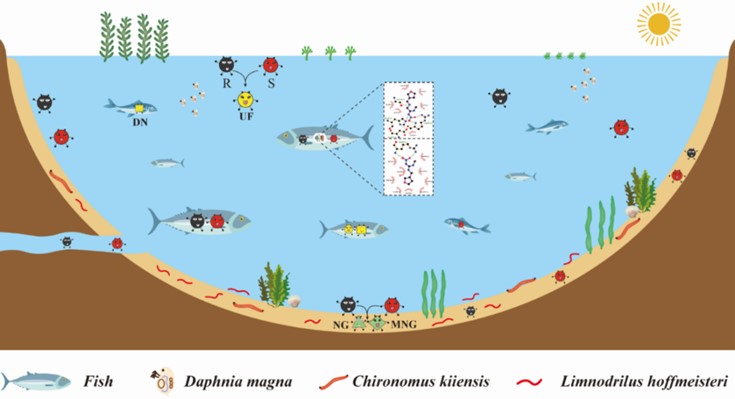
Links
The Fate, Acute, and Subchronic Risks of Dinotefuran in the Water-sediment System: A Systematic Analysis at the Enantiomer Level
Recently, the Innovation team Tobacco Disease and Pest Green Prevention and Control of Tobacco Research Institute has systematically analyzed the stereoselective behavior and molecular mechanism of the chiral nicotinic insecticide dinotefuran in the water-sediment system. Relevant research results were published in the international academic journal "Journal of Hazardous Materials" in the field of environment (JCR Q1, Top 5%, IF2021=14.224), which has important guiding significance for the efficient use of chiral pesticides and pollution remediation.
Abstract
Environmental risks associated with neonicotinoid insecticides have attracted considerable attention. This study systematically investigated the stereoselective behavior of dinotefuran in a water-sediment system. The results showed that S-dinotefuran accumulated more easily in sediment and zebrafish. Although dinotefuran enantiomers and metabolites present a low risk to aquatic organisms, the risk of dinotefuran enantiomers to sediment organisms should be considered. Additionally, S-dinotefuran induced more remarkable oxidative damage in zebrafish than that of R-dinotefuran. Nevertheless, R-dinotefuran remarkably activated antioxidant and detoxifying enzymes. Multi-omics analyses revealed that S-dinotefuran induced more differentially expressed genes (DEGs) and differentially expressed proteins (DEPs) in zebrafish. In particular, S-dinotefuran inhibited the expression of ribosome- and proteasome-related genes and proteins, affecting the synthesis and degradation of proteins in zebrafish. R-dinotefuran remarkably activated peroxisome-related genes and proteins, thereby enhancing antioxidant and detoxification abilities of zebrafish. The stereoselective interactions between dinotefuran enantiomers and key DEPs were elucidated using AlphaFold2 modeling and molecular docking techniques, which may serve as the main reason for stereoselective subchronic toxicity. The present study is beneficial for the correct use of dinotefuran and provides an effective means for elucidating the mechanism of the stereoselective behavior of chiral compounds.
